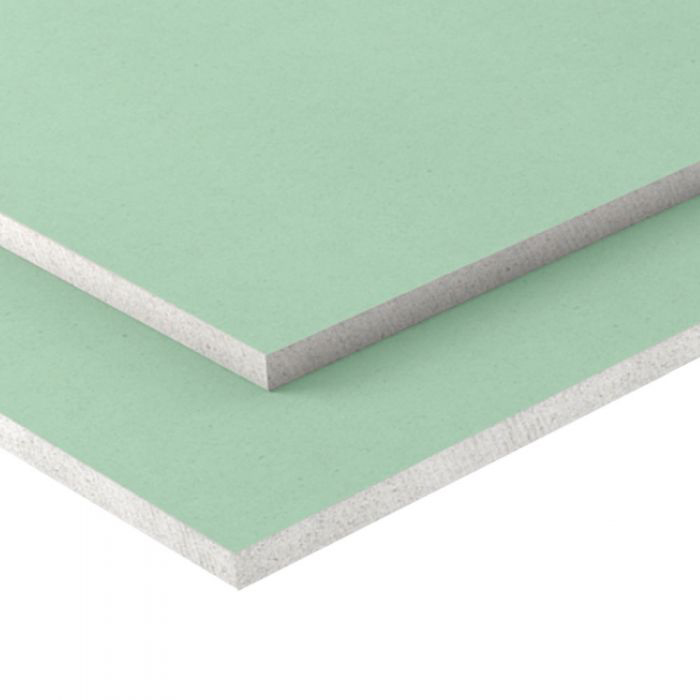FIRE RESISTANT PLASTERBOARD: HELPFUL INSIGHTS

Explore the world of fire-resistant plasterboard. Learn how it's made, it's applications, and the importance of proper installation for fire safety.
How is Fire Retardent Plasterboard made?
Gypsum plasterboard with glass fibre and other additives in the core is a type of plasterboard that has been modified to improve its strength and fire resistance. The core of the plasterboard is made from gypsum, which is a soft sulphate mineral composed of calcium sulphate dihydrate. Glass fibres and other additives are then added to the core mixture, which improves the board's strength and resistance to fire.
The glass fibres in the core increase the rigidity of the board, which helps to prevent it from warping or sagging over time which also make them more suitable for use in high-traffic areas. The addition of other additives like fireproofing agents further improves the fire resistance of the plasterboard, which makes it ideal for use in buildings that require a higher fire rating.
Also known as Fireline, Fire Panel or Fireboard, It is a fire-resistant plasterboard that is used in walls and ceilings where a high level of fire resistance is required, such as in commercial buildings, hospitals, and schools.
It's important to follow the manufacturer's installation instructions, as the addition of glass fibres and other additives may change the way the plasterboard is installed, particularly the weight and thickness of the board, and may require different tools to cut it.
Where to use Fire Proof Plasterboard
Residential Applications
Kitchens: Especially those with gas cooktops, are prone to grease fires. Fire-resistant plasterboard can help contain a fire and slow its spread to adjacent areas.
Garages: If your garage is attached to your home, using fire-resistant plasterboard on the shared wall or ceiling is usually essential as it can provide an extra layer of protection.
Basements: Often used for storage or workshops, can contain flammable materials. Fire-resistant plasterboard can help prevent a fire from spreading quickly.
Commercial and Public Spaces
Corridors and Stairwells: These areas serve as escape routes and need to remain accessible during a fire. Fire-resistant plasterboard can help maintain structural integrity and reduce smoke spread.
Commercial Kitchens: Similar to residential kitchens, commercial kitchens can be high-risk areas. Fire-resistant plasterboard can help protect against fires and limit damage.
Hotels and Apartments: In multi-unit buildings, fire-resistant plasterboard can help contain a fire within a specific unit, reducing the risk of it spreading to other units.
Schools and Hospitals: These buildings often have high occupancy rates and require strict fire safety measures. Fire-resistant plasterboard can help protect occupants and staff.
How to cut Fire Resistant Plasterboard
There are a few different ways to cut fire-resistant plasterboard, depending on the tools you have available. The most common methods include:
Using a utility knife: This is the simplest method and can be done with a sharp utility knife. Simply score the board along the cut line and then snap it along the scored line.
Using a saw: A handsaw or power saw can also be used to cut fire-resistant plasterboard. When using a saw, it's important to use a fine-toothed blade to prevent chipping or fraying of the edges.
Using a circular saw: A circular saw can be used to make quick and precise cuts in fire-resistant plasterboard. However, it's important to use a fine-toothed blade and make sure that the saw is set to the proper depth to prevent chipping or fraying of the edges.
Using a scoring tool: Some manufacturers provide a scoring tool which is specially designed for cutting the fire-resistant plasterboard. This tool allows the user to score the board along the cut line, then snap it along the scored line, it is specially designed to prevent chipping or fraying of the edges.
When cutting fire-resistant plasterboard, it's important to wear protective gear like goggles and a dust mask so you don't breathe in dust and other particles. It's also important to work in a well-ventilated area and to use a straightedge or square as a guide to ensure straight cuts.
The Technical Stuff
Whether you need a 30 minute fire rated plasterboard, 60 minute fire rated plasterboard or a 120 minute fire rated plasterboard, careful consideration must be given in order to achieve the desired rating as it will not only depend on the thickness and number of layers but also the application and type of construction. For example, 1 layer of 2400 x 1200 x 12.5mm Fire Resistant Plasterboard used on garage ceiling will be sufficient to give a 30 minutes fire rating. A partition between properties requiring a 120 minutes fire rating will be a more complex design incorporating insulation and studwork. As this is a specialised task, it will require professional help and knowledge of fire safety regulations to ensure the safety of the building and its occupants.
In order for the fire-resistant properties of the plasterboard to work, it must be installed correctly. The joints between the boards should be tightly sealed with fire-resistant tape and compound to prevent the spread of fire and smoke. Also, fire-resistant plasterboard should be installed according to local building codes and regulations, including any fire-resistance ratings that may be needed for the area of the building where it is being installed.
Another important aspect to consider is that fire-resistant plasterboard has different weight and thickness than standard plasterboard, so it's important to check if the structure can support the weight and if the thickness is compatible with the existing structure.
If you need any further help or advice regarding fire ratings and plasterboards systems, please contact us on phone 01274 602367










